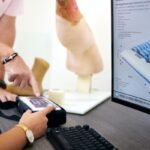When it comes to evaluating the health and function of your heart, especially under physical stress, few diagnostic tools are as informative as the Cardiolite stress test. This specialized test doesn’t just examine how your heart performs when you’re at rest, but it pushes the boundaries—quite literally—by observing how it behaves under controlled physical exertion. Whether you’re experiencing unexplained chest pain, shortness of breath, or recovering from a cardiac event, understanding this procedure could be vital for your health.
Understanding the Cardiolite Stress Test
At its core, the Cardiolite stress test is a form of nuclear imaging. Unlike traditional stress tests that rely solely on physical indicators like heartbeat or electrocardiogram (EKG) readings, the Cardiolite stress test goes a step further by using a small amount of radioactive material—commonly referred to as Cardiolite—to capture detailed images of your heart muscle. This allows physicians to see how well blood is flowing through your heart, both at rest and during physical stress.
The Cardiolite itself is a radiopharmaceutical agent, typically injected into a vein during the test. Once introduced into the bloodstream, it travels to the heart and emits gamma rays that are detected by a special camera. These images provide clear visual insights into areas of the heart that may not be receiving enough blood, which is critical for diagnosing conditions such as coronary artery disease.
Why a Cardiolite Stress Test Is Performed
There are several clinical scenarios in which a Cardiolite stress test may be recommended. For individuals who present symptoms like chest discomfort, fatigue, or irregular heartbeat, this test offers a non-invasive yet detailed examination of the heart’s performance. It is particularly useful for identifying blockages in the coronary arteries or determining the extent of damage after a heart attack.
Moreover, the Cardiolite stress test is often employed before or after certain heart surgeries or interventions to evaluate the effectiveness of treatment. It can also guide physicians in determining the most appropriate level of physical activity for a patient recovering from heart-related ailments.
The Process of the Cardiolite Stress Test
Though the idea of a “stress test” may sound intimidating, the process is highly structured and performed under careful medical supervision. Typically, the procedure is divided into two main phases: rest and stress. During the rest phase, Cardiolite is injected, and images of your heart are taken while you’re lying down and relaxed. These images serve as a baseline to compare against those taken during the stress phase.
For the stress portion of the test, you’ll usually be asked to walk on a treadmill. The speed and incline are gradually increased to elevate your heart rate. If physical exercise isn’t feasible due to medical reasons, a pharmacologic agent may be administered instead. This medication simulates the effects of exercise by increasing blood flow to the heart, allowing doctors to still evaluate its function under stress.
Once the heart reaches the desired level of activity, another dose of Cardiolite is injected. Additional images are then captured, which are later compared to the rest images to identify any areas of concern.
What the Results Can Reveal
One of the most significant advantages of the Cardiolite stress test is the depth of insight it offers. The side-by-side comparison of heart images taken during rest and stress phases can uncover vital clues about your cardiac health. Areas that show reduced uptake of the Cardiolite tracer during stress but normal uptake at rest may indicate reversible ischemia, which points to a partial blockage in the coronary arteries.
Conversely, regions that show reduced blood flow both at rest and during stress might suggest permanent damage, such as from a previous heart attack. These distinctions are essential for determining the right course of action—whether it’s medication, lifestyle changes, or surgical intervention.
Safety and Considerations
Although the Cardiolite stress test involves radioactive material, it is considered safe for most patients. The level of radiation exposure is relatively low and comparable to that of other imaging tests. Nevertheless, it’s important to inform your physician of any existing medical conditions, allergies, or if you’re pregnant or breastfeeding, so they can take necessary precautions.
Patients may experience minor side effects from the Cardiolite injection or the stress-inducing medication, such as headache, flushing, or dizziness, but these symptoms usually resolve quickly. The entire procedure, including preparation and imaging, typically takes a few hours, and you can often resume normal activities the same day.
Preparing for the Cardiolite Stress Test
To ensure accurate results, your healthcare provider will give you specific instructions to follow before the test. These may include avoiding caffeine, refraining from certain medications, and fasting for a few hours beforehand. Wearing comfortable clothing and shoes suitable for walking is also recommended if you’ll be undergoing the treadmill portion of the test.
Being well-prepared not only makes the experience smoother but also helps in obtaining the most reliable data about your heart health.
Advancements and Future of Cardiac Imaging
As medical technology continues to evolve, so does the precision of diagnostic tools like the Cardiolite stress test. Modern imaging systems now offer enhanced resolution, reduced scan times, and even the ability to fuse data with other imaging modalities such as CT or MRI scans. These innovations pave the way for even more personalized and effective treatment plans.
Research is also ongoing into alternative tracers and imaging agents that may further minimize radiation exposure while providing even clearer images of heart function. As a result, the Cardiolite stress test remains a cornerstone in cardiology, with continuous improvements enhancing its diagnostic power.
A Vital Tool for Proactive Heart Care
In an age where heart disease remains one of the leading causes of mortality worldwide, tests like the Cardiolite stress test play an essential role in early detection and intervention. Its ability to provide both functional and anatomical information makes it an invaluable tool for cardiologists and patients alike.
By combining exercise or pharmacologic stimulation with advanced nuclear imaging, the Cardiolite stress test offers unparalleled insights into how well your heart is performing and whether it’s getting the blood it needs. This level of clarity empowers both patients and healthcare providers to make informed decisions about treatment and long-term care.
Conclusion: Trust Your Heart to the Science Behind the Cardiolite Stress Test
Heart health is not something to take lightly, and when symptoms arise or risks are known, timely and accurate evaluation is key. The Cardiolite stress test stands out as a powerful diagnostic method, providing in-depth knowledge of how your heart functions under pressure. From detecting early signs of coronary artery disease to guiding recovery strategies after a heart event, this test has proven its worth time and again.
As you take proactive steps toward understanding and improving your cardiovascular health, knowing what to expect from a Cardiolite stress test can make a world of difference. It’s more than just a test—it’s a critical insight into one of your body’s most vital organs.



